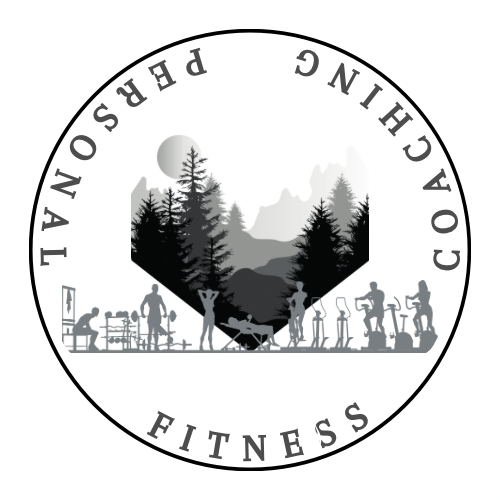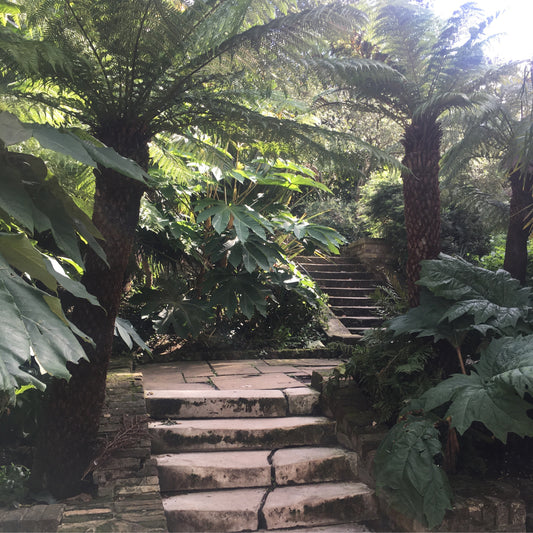Yoga
Yoga, is the practice of good physical, mental, and spiritual beliefs, and self-discipline that indicates a variety of different schools, training and goals in Hinduism and Buddhism including the principals of Vajrayana, Tibetan, Buddhism and Jainism, the most well known being Hatha Yoga and Raja yoga.
The origins and birth of Yoga have been theorized about, to a date that may have been pre-Vedic Indian traditions, but most likely developed around the sixth or fifth centuries BCE, in ancient India's ascetic circles, which are also credited with the early sramana movements. The chronology of earliest texts describing yoga-practices is unclear, varyingly acknowledgment to Hindu Upanishads and Buddhist Pāli Canon, probably of third century BCE or later. The Yoga Sutras of Patanjali from first half of 1st millennium CE is one of a key surviving major texts on Yoga. hatha Yoga texts emerged around 11th century CE, and in its origins was related to Tantrism.
Yoga gurus from India later introduced yoga to the western hemisphere, following the success of Swami Vivekananda in the late 19th and early 20th century. In the 1980s, yoga became popular as a system of physical exersise across the Western world. Yoga in Indian traditions, however, is more than physical exercise, it has a meditative and spiritual core. One of the six major orthodox schools of Hinduism is also called Yoga, which has its own epistemology and metaphysics, and is closely related to Hindu Sankhya philosophy.
Many studies have tried to determine the effectiveness of yoga as a complementary intervention for cancer, schizophrenia, asthma, and heart disease. The results of these studies have been mixed and inconclusive, with cancer studies suggesting none to unclear effectiveness, and others suggesting yoga may reduce risk factors and aid in a patient's psychological healing process.

Sivananda yoga, after teachings of Swami Sivananda, is a non-proprietary form of hatha yoga in which the training focuses on preserving the health and wellbeing of the of the practitioner.
Ananda Yoga, or Ananda Yoga for Higher Awareness is a system of Hatha Yoga established by Kriyananda, a disciple of Paramahansa Yogananda, and is based is based on his Kriya Yoga teachings.
Iyengar Yoga, named after and developed by B. K. S. Iyengar, is a form of HathaYoga that has an emphasis on detail, precision and alignment in the performance of posture (asana) and breath control (pranayama). there school is located in Puna were you can find them at the following address http://www.bksiyengar.com/.
This type of yoga distinct from other types, such as Iyengar Yoga or Ashtanga yoga. Often the poses, or Asanas, are often adaptations of Hatha yoga poses. Frequently is a gentle form of yoga that is practiced sitting on a chair, or standing using a chair for support. It is in the process of being recognized formally as a type of yoga distinct from other types, such as Iyengar Yoga or Ashtanga yoga.
Naked yoga Sanskrit nagna yoga is the practice of yoga without clothes. While many practice naked yoga at home and in nature, there are a growing number of participants, including children, in group classes.
Kriya Yoga The Kriya Yoga taught by Lahiri Mahasaya. For other uses of the term KriyaYoga, see Kriyā. Kriya Yoga is described by its practitioners as the ancient Yoga system revived in modern times by Mahavatar Babaji through his disciple Lahiri Mahasaya,
In colder climates, hot yoga often seeks to replicate Often associated with the style devised by Bikram Choudhury, hot yoga is now used to describe any number of yoga styles that use heat to increase an individual's flexibility in the poses.
Bikram Yoga was brought to the U.S. in the early 70s and became the most widely known form of hot yoga performed at 105 degree.
Forest Yoga combines yoga asana with Native American spirituality to create as a "yoga sweat lodge" in a heated room.
Power Yoga is derived from Ashtanga Vinyasa Yoga and uses heat to replicate environmental conditions in Mysore.
TriBalance Yoga Another form of hot yoga, performed in slightly warmer but less humid conditions than Bikram Yoga.
Pranayama Yoga
Pranayama is the fourth 'limb' of the eight limbs of Ashtanga Yoga mentioned in verse 2.29 in the Yoga Sutras of Patanjali. Patanjali, a Hindu Rishi, discusses Sanskrit as a word meaning "extension of theprāṇa or breath" or "extension of the life force". The word is composed of two Sanskrit words: prana, life force, or vital energy, (noted particularly as the breath), and ayāma, to extend or draw out.
Karma yoga, or the "discipline of action" is a form of yoga based on the teachings of the Bhagavad Gita, a sacred Sanskrit scripture of Hinduism.
School of Hatha Yoga, also known as Anusara Yoga, is the successor of a modern school of hatha yoga originally started by American-born yoga teacher John Friend in 1997. Friend derived his style from the Iyengar style of yoga and reintroduced elements of Hindu spirituality into a more health-oriented Western approach to Yoga.
Yantra Yoga, essentially a commentary on a practical yoga manual by Vairotsana. Namkhai Norbu tilled the ground for the dissemination of Yantra Yoga through (Sanskrit: vayv-adhisāra "magical movement instrument, channels and inner breath currents"), known in short as Trul khor "magical instrument" or "magic circle" (adhisāra ) is a Vajrayana discipline which includes pranayama and body postures (asanas).
Indian yoga teacher Tirumalai Krishnamacharya created his individual yoga style, which came to be known as Viniyoga. The term viniyoga has been used by Viniyoga is a Sanskrit word that has multiple meanings. Literal meanings include "separation", "detachment", and "leaving", but the common meanings include "employment", "use", and "application". The root viniyuj means "to use", "to employ", "to do", among other senses.
Bhakti yoga The Bhagavad Gita introduces bhakti yoga in combination with karma yoga and jnana yoga, while the Bhagavata Purana expands on bhakti yoga, offering In Hinduism, Bhakti (also spelled Bhakthi; Sanskrit literally meaning "portion, share", from the root bhaj- "to involve in, to receive one's share") refers to religious devotion of a devotee in the worship of the divine. Within monotheistic Hinduism, it is the love felt by the worshipper towards the personal God, a concept expressed in Hindu theology as Iṣṭa-devatā.
Hatha yoga also called haṭhavidya, is a branch of yoga. The word hatha meaning 'force' denotes a system of physical techniques supplementary to a broad conception of yoga.
Kundalini Yoga also known as laya yoga, is a school of yoga. Kundalini yoga was influenced by the tantra and shakta. Kundalini yoga derives its name through a focus on awakening kundalini energy through regular practice of meditation, pranayama, chanting mantra and yoga asana. Called by practitioners "the yoga of awareness", it aims "to cultivate the creative spiritual potential of a human to uphold values, speak truth, and focus on the compassion and consciousness needed to serve and heal others.
Sahaj marg known as (The Natural path), is a form of Raja Yoga, is a heart-based meditation system. The essential features of Sahaj Marg system are Meditation, Cleaning and Prayer. The "cleaning" of impressions (called samskaras) is claimed to be unique to this method. Meditation is on the "mere supposition of divine light" in one's heart and it is done for 30 – 60 minutes every morning. Cleaning is done to remove the accumulated grossness in oneself. It is undertaken in the evening after the day's work is over and lasts for 30 minutes. The bed time prayer is 10 minutes.
Laughter yoga (Hasyayoga) is a practice involving prolonged voluntary laughter. Laughter yoga is based on the belief that voluntary laughter provides the same physiological and psychological benefits as spontaneous laughter. Laughter yoga is done in groups, with eye contact and playfulness between participants. Forced laughter soon turns into real and contagious laughter.
Bikramis is a system of yoga that Bikram Choudhury synthesized from traditional hatha yoga techniques and popularized beginning in the early 1970s. All Bikram Yoga classes run for 90 minutes and consist of the same series of 26 postures, including two breathing exercises. Bikram Yoga is ideally practiced in a room heated to 40 °C (104 °F) with a humidity of 40%. All official Bikram classes are taught by Bikram-certified teachers, who have completed nine weeks of training endorsed by Choudhury. Bikram-certified teachers are taught a standardized dialogue to run the class, but are encouraged to develop their teaching skills the longer they teach. This results in varying deliveries and distinct teaching styles.
Dynamic Yoga In about the 2nd or 3rd century ad the indian sage patanjali organised the ancient teachings into a system of yoga sutras. In accordance to this classic texts, the practice of asana (postures) of Yoga, the movements most people contemplate as yoga - represent only a small part of the whole, and was originally intended simply as a preparation for meditation and the accompanying possibility of evolvement and enlightenment. The whole methodology is intended to be supported by 10 guidelines for living, the most important being ‘ahimsa’, compassion for all living things (including ourselves). These form the psychological foundations for our journey and guide our awareness to our relationship with ourselves, our relationships with others, and to the choices we make in all areas of our lives not just on the yoga mat. As it is described in the title it is a Dynamic practice and the movement is fluid and faster moving than other practices of yoga. Classes can be found on the internet.
How paramount the future is to the present, when one is surround by children.
Charles Darwin
The Blog

The Blog
There is a compilation of posted that have been written over the years. The Bush Healing centre aims to “The Bush Healing Centre has published these blogs and designed them to provide information in regard to the subject matter covered. It is written with the understanding that the publisher and author are not liable for the misconception or the misuse of the information provided.

Every effort has been made to make these blogs as complete and as accurate as possible. The purpose of this to guild and educate. The author and publisher shall have neither liability nor responsibility to any person or being with the respect to any loss, damage, or injury caused or alleged to be caused directly by the information contained in this book. The information given and presented herein is in no way intended as a substitute for medical counselling. ”




